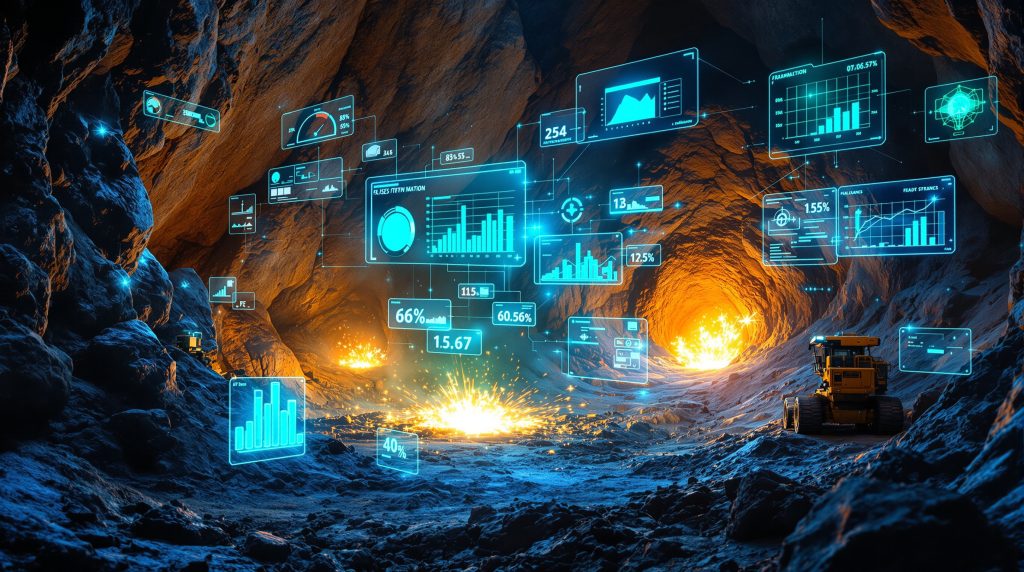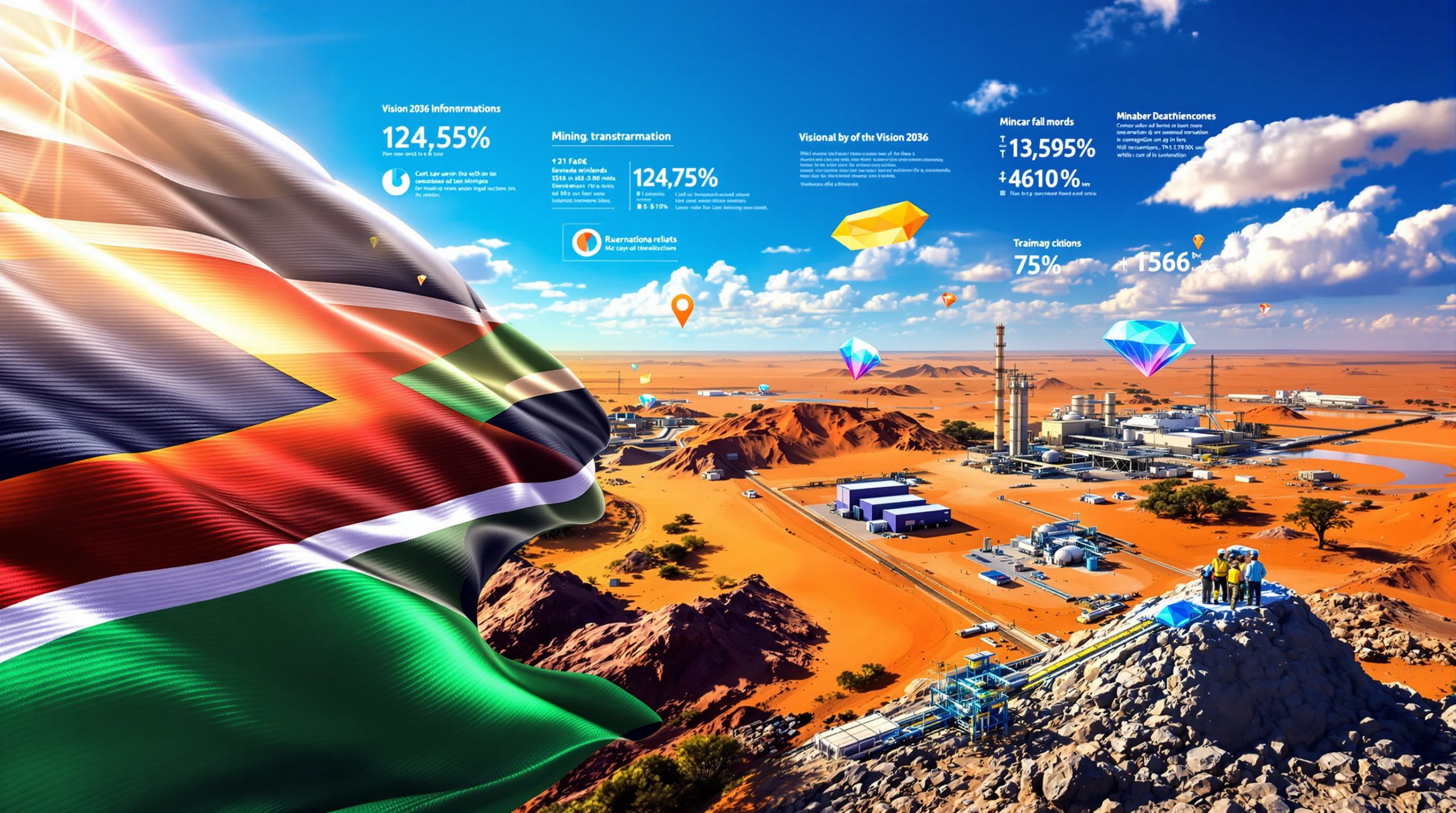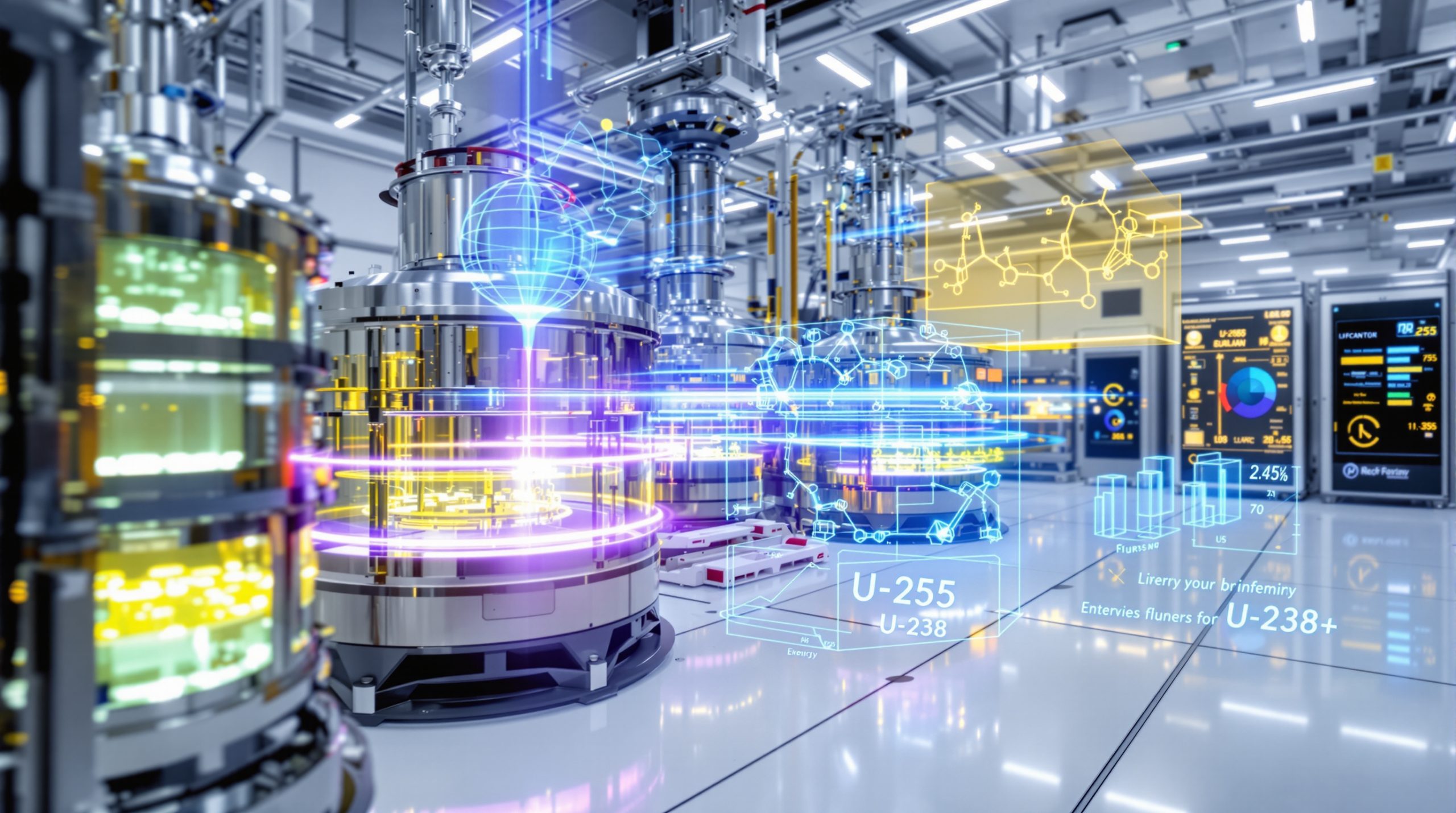Understanding the Technology Behind Intelligent Explosive Management
Modern mining operations are experiencing a technological revolution through AI-driven blasting optimisation, fundamentally changing how explosive materials are deployed and managed across mining sites. This transformation combines sophisticated algorithms with real-time data processing to achieve unprecedented levels of precision in blast design and execution.
Core Components of AI-Powered Blast Design Systems
The foundation of intelligent explosive management rests on several interconnected technological components working in harmony. Machine learning algorithms process vast geological datasets to identify optimal blast parameters, while real-time sensor networks continuously monitor site conditions and equipment performance.
Key technological elements include:
- Predictive modeling frameworks that simulate fragmentation outcomes before detonation
- Digital twin technology creating virtual representations of blast sites
- Automated parameter adjustment systems responding to changing geological conditions
- Integration platforms connecting multiple data sources into unified decision-making tools
Key Data Sources Fueling AI Optimisation
The effectiveness of AI-driven blasting optimisation depends heavily on comprehensive data collection from multiple sources. Historical blast performance metrics provide baseline measurements, while geological surveys contribute detailed rock property information essential for accurate modeling.
Environmental monitoring data streams ensure compliance with regulatory requirements, while equipment performance metrics enable continuous system refinement. Furthermore, these diverse data inputs create a comprehensive operational picture that drives intelligent decision-making processes.
Primary Benefits of Implementing AI in Blasting Operations
The implementation of AI-driven blasting optimisation delivers measurable improvements across multiple operational dimensions, from enhanced precision to significant cost reductions. Mining companies adopting these technologies report substantial gains in both efficiency and safety metrics.
Enhanced Precision and Fragmentation Control
Advanced AI systems enable miners to achieve remarkable improvements in fragmentation control, directly impacting downstream processing efficiency. According to recent industry analyses, modern AI-optimised blasting can reduce oversized material production by up to 35%, while simultaneously improving energy distribution patterns across blast sites.
This enhanced precision translates into:
- Reduced secondary breaking requirements through optimal initial fragmentation
- Improved mill throughput via consistent material sizing
- Enhanced crusher performance due to predictable feed characteristics
- Lower equipment wear rates from optimised material handling
Safety and Risk Mitigation Advantages
In addition, ai in blasting innovations significantly enhance safety protocols through predictive modeling and real-time monitoring capabilities. These systems can forecast potential hazards and automatically adjust blast parameters to minimize risks.
| Safety Metric | Traditional Methods | AI-Optimised Approach | Improvement |
|---|---|---|---|
| Flyrock incidents | 3-5 per quarter | 0-1 per quarter | 80% reduction |
| Ground vibration control | Manual calculations | Real-time predictive models | 40% better accuracy |
| Personnel exposure time | Extended field presence | Remote monitoring systems | 60% less exposure |
How Leading Mining Companies Integrate AI Blasting Solutions
The integration of AI technologies into existing mining operations requires systematic planning and phased implementation approaches. Successful deployments typically follow structured frameworks that address technical, operational, and human resource considerations.
Implementation Framework for AI-Driven Systems
Mining companies pursuing AI-driven blasting optimisation typically follow a comprehensive implementation pathway:
-
Infrastructure Development Phase
- Installing comprehensive sensor networks across designated blast sites
- Establishing robust geological database systems with historical data integration
- Creating secure digital communication protocols for real-time data transmission
-
Algorithm Development and Training
- Conducting extensive analysis of historical blast performance data
- Implementing site-specific parameter optimisation protocols
- Developing continuous learning model frameworks for ongoing improvement
-
Operational Integration and Validation
- Deploying controlled pilot programs to validate system performance
- Establishing comprehensive performance validation protocols
- Implementing staff training programs and change management initiatives
Technology Partnership Models in the Australian Market
Australian mining companies are increasingly forming strategic alliances with technology providers to accelerate AI adoption. Recent developments include partnerships between established blasting specialists and emerging AI companies, creating integrated software platforms that combine multiple technological capabilities.
Consequently, these collaborative models enable mining operations to access cutting-edge AI technologies without developing proprietary systems internally, while technology providers gain valuable real-world testing environments for continuous system refinement.
Which AI Technologies Drive the Most Significant Improvements
The most impactful AI technologies in blasting optimisation centre around machine learning applications and advanced analytics platforms. These systems process complex geological data to generate actionable insights for blast design optimisation.
Machine Learning Applications in Blast Design
Neural networks play a crucial role in fragmentation prediction, analysing geological data patterns to forecast blast outcomes with remarkable accuracy. Modern optimisation algorithms automatically determine optimal charge placement and timing sequences, while pattern recognition systems identify geological features that influence blast performance.
Furthermore, computer vision technologies enable automated parameter adjustment based on real-time site conditions, creating responsive systems that adapt to changing operational requirements.
Advanced Analytics and Predictive Modeling
Contemporary AI systems can predict blast outcomes with 85-90% accuracy, compared to 60-70% accuracy from traditional empirical methods, leading to substantial cost savings and operational improvements across mining operations.
These predictive capabilities enable mining engineers to optimise blast designs before implementation, reducing trial-and-error approaches that historically characterised blasting operations. Moreover, data-driven mining operations integrate multiple data streams to provide comprehensive operational insights.
Computer Vision and Image Processing Capabilities
Modern AI systems incorporate sophisticated image processing technologies that transform post-blast analysis capabilities. 3D geological modelling systems automatically measure fragmentation size distributions, while real-time monitoring technologies track blast progression and document results for continuous improvement initiatives.
Digital documentation systems create comprehensive records of blast performance, enabling data-driven refinements to future operations while supporting regulatory compliance requirements.
Economic Impact of AI Optimisation
The financial implications of AI-driven blasting optimisation extend far beyond immediate explosive cost savings, creating value throughout the mining value chain through improved efficiency and reduced operational complexity.
Cost Reduction Across Mining Operations
Mining operations implementing AI-driven blasting optimisation report significant cost reductions across multiple operational categories:
- Explosive material savings: 15-25% reduction in total explosive consumption
- Equipment wear reduction: 20-30% improvement in crusher and mill component longevity
- Processing efficiency gains: 10-20% throughput increase in downstream processing operations
- Labor cost optimisation: Reduced manual intervention requirements through automated systems
Return on Investment Analysis
The economic benefits of AI implementation typically justify initial investment costs within relatively short timeframes:
| Investment Category | Typical Cost Range | Payback Period | Long-term Benefits |
|---|---|---|---|
| Software licensing | $50,000-$200,000 annually | 6-12 months | Continuous optimisation capabilities |
| Hardware integration | $100,000-$500,000 initial | 12-18 months | Enhanced data collection infrastructure |
| Training and implementation | $25,000-$75,000 initial | 3-6 months | Improved operational efficiency |
Environmental Sustainability Benefits from AI Blasting
AI-driven blasting optimisation contributes significantly to environmental sustainability initiatives through reduced resource consumption and minimised ecological impact. These systems enable mining operations to achieve production targets while reducing their environmental footprint.
Reduced Environmental Footprint
Optimised blasting patterns significantly reduce ground vibration and noise pollution, addressing community concerns while maintaining operational efficiency. Enhanced fragmentation control decreases dust generation, while improved processing efficiency reduces overall fuel consumption in downstream operations.
Additionally, precise explosive placement minimises waste generation and reduces the risk of environmental contamination from unexploded materials.
Compliance and Regulatory Advantages
AI systems automatically generate comprehensive documentation for environmental reporting requirements, while predictive modeling capabilities enable accurate environmental impact assessments. Real-time monitoring of environmental parameters ensures continuous compliance with regulatory standards.
These capabilities enhance community relations through demonstrable commitment to environmental stewardship and reduced operational disturbances.
Challenges in Adopting AI Blasting Technology
Despite significant benefits, mining companies face various challenges when implementing AI-driven blasting optimisation systems. Understanding these obstacles enables better preparation and more successful technology adoption initiatives.
Technical Implementation Barriers
Data quality and standardisation requirements present significant challenges for many mining operations. Legacy systems may lack the data infrastructure necessary for AI implementation, while cybersecurity considerations become increasingly important as mining operations become more connected.
Integration with existing mining systems requires careful planning and may necessitate substantial infrastructure upgrades. Additionally, developing specialised technical expertise within mining organisations requires significant investment in training and recruitment.
Organisational Change Management
Cultural adaptation to technology-driven processes can prove challenging in traditional mining environments. Successful implementations require comprehensive change management strategies addressing workforce concerns and resistance to new operational procedures.
Coordination between multiple technology providers can create complexity in system integration and ongoing support requirements, while long-term strategic planning becomes essential for managing system evolution and technology upgrades.
Australian Mining Operations Leading AI Blasting Innovation
Australian mining companies are at the forefront of AI-driven blasting optimisation adoption, leveraging the country's technological expertise and innovative mining culture to drive industry advancement.
Major Resource Companies Embracing AI Technology
Large-scale iron ore operations across Western Australia are implementing comprehensive AI systems to optimise their massive blasting operations. Gold mining companies focus particularly on precision and safety improvements, while coal mining operations emphasise environmental compliance and community impact reduction.
Quarrying operations throughout Australia are adopting AI technologies to enhance productivity and reduce operational costs, demonstrating the broad applicability of these systems across different mining sectors.
Regional Innovation Hubs and Technology Development
Perth has emerged as a significant hub for mining technology development, with numerous companies specialising in AI-powered mining solutions. University research partnerships across Australia are advancing AI applications in mining, while government support programs encourage innovation adoption throughout the industry.
Industry collaboration initiatives facilitate best practice sharing and accelerate technology adoption across the mining sector, creating a supportive ecosystem for continued innovation.
Future Evolution of AI Blasting Technology
The trajectory of AI-driven blasting optimisation points toward increasingly sophisticated and autonomous systems that will further transform mining operations in the coming years.
Emerging Technological Trends
Integration with autonomous mining equipment represents a significant development area, enabling fully coordinated mining operations from blasting through material handling. Advanced predictive analytics will incorporate long-term planning capabilities, while IoT sensor networks will provide increasingly granular real-time optimisation.
For instance, innovative mining trends may incorporate climate and weather data into machine learning models, enabling more accurate predictions and better operational planning capabilities.
Industry Transformation Predictions
Industry analysts anticipate widespread adoption of AI-driven blasting optimisation across medium-sized mining operations within the next five years. Development of industry-standard AI protocols will facilitate technology adoption and system interoperability.
However, enhanced integration with modern mine planning software will create more holistic operational optimisation capabilities, while evolution toward fully automated blasting systems may fundamentally transform mining operations management.
Frequently Asked Questions About AI-Driven Blasting Optimisation
What Skills Do Mining Professionals Need for AI Implementation?
Mining professionals working with AI-driven systems require enhanced data analysis and interpretation capabilities, along with fundamental understanding of machine learning principles. Technology integration and system management skills become increasingly valuable, while maintaining a continuous learning mindset proves essential for adaptation to evolving technologies.
How Long Does Implementation Typically Take?
Implementation timelines vary significantly based on operational complexity and existing infrastructure:
- Initial system setup: 3-6 months for basic deployment
- Full operational integration: 12-18 months for comprehensive implementation
- Optimisation and refinement: Ongoing process requiring continuous attention
- Return on investment realisation: 6-24 months depending on scale and complexity
What Are the Key Success Factors for AI Adoption?
Successful AI implementation requires strong leadership commitment and clear vision for technology integration. Adequate investment in both technology infrastructure and comprehensive training programs proves essential for long-term success.
Collaboration with experienced technology partners accelerates implementation and reduces risks, while continuous monitoring and improvement processes ensure ongoing system optimisation and value realisation.
Disclaimer: This article contains forward-looking statements and industry analysis that should be considered alongside current market conditions and individual operational requirements. Mining companies should conduct thorough due diligence before implementing AI-driven blasting optimisation systems.
Ready to Capitalise on AI-Driven Mining Innovation?
Mining technology advances like AI-driven blasting optimisation are transforming the industry landscape, creating significant opportunities for investors positioned ahead of these trends. Discovery Alert's proprietary Discovery IQ model delivers real-time alerts on breakthrough ASX mineral discoveries and technological developments, empowering subscribers to identify actionable investment opportunities as mining companies implement cutting-edge solutions that drive operational excellence and market value.




